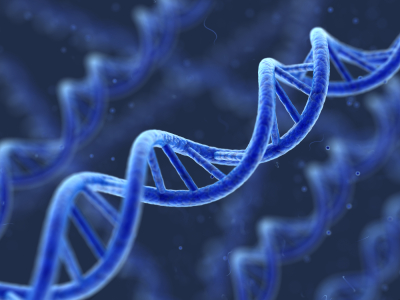Milestone achievement may lead to more sophisticated clinical laboratory tests
![]()
Now science can create synthetic life forms and J. Craig Venter, Ph.D., is the first to do it. The landmark feat, which involved building the genome of a bacterium from scratch and incorporating it into a cell, “paves the way for designer organisms that are built rather than evolved,” noted the author of an article in guardian.co.uk.
J. Craig Venter, Ph.D., best known to pathologists and clinical laboratory scientists for his role in sequencing the first human genome, achieved the feat at the J. Craig Venter Institute in Rockville, Maryland. Venter and his team synthesized the 1.08 million base pair chromosome of a modified Mycoplasma mycoides genome. The synthetic cell, called Mycoplasma mycoides JCVI-syn1.0, is proof of the principle that genomes can be designed in the computer, chemically made in the laboratory, and transplanted into a recipient cell to produce a new self-replicating cell controlled by the synthetic genome. The experiment demonstrates how fast genetic technologies are advancing.

Nobel Laureate Hamilton O. Smith, M.D., is Scientific Director Synthetic Biology and Bioenergy at the Venter Institute. He said, “With this first synthetic bacterial cell and the new tools and technologies we developed to successfully complete this project, we now have the means to dissect the genetic instruction set of a bacterial cell to see and understand how it really works.”
This breakthrough research, which was published in the latest issue of Science, is the culmination of 15 years of research at J. Craig Venter Institute (JCVI) and cost of $40 million, noted Venter, who is founder and president of JCVI and senior author on the paper.
Daniel G. Gibson, Ph.D., who is Associate Professor in the Synthetic Biology and Bioenergy Department at the JCVI, explained, “To produce a synthetic cell, our group had to learn how to sequence, synthesize, and transplant genomes. Many hurdles had to be overcome, but we are now able to combine all of these steps to produce synthetic cells in the laboratory. We can now begin working on our ultimate objective of synthesizing a minimal cell containing only the genes necessary to sustain life in its simplest form. “This will help us better understand how cells work.”
“We have been consumed by this research, Venter continued, “but we have also been equally focused on addressing the societal implications of what we believe will be one of the most powerful technologies and industrial drivers for societal good. We look forward to continued review and dialogue about the important applications of this work to ensure that it is used for the benefit of all.”
Scientists at JCVI envision that the knowledge gained by constructing this first self-replicating synthetic cell, coupled with decreasing costs for DNA synthesis, will give rise to wider use of this technology. They predict the technology will find important applications in products such as biofuels, vaccines, pharmaceuticals, clean water, and food products.
It is also likely that pathologists will take the ability to engineer synthetic organisms and apply this technology to the creation of more sophisticated diagnostic tests. The explosion of knowledge produced by ongoing advances in genetic research points is already giving pathology and laboratory medicine new tools for diagnosing disease and determining the best treatments for patients.
Related Information:
Synthetic Genome Brings New Life to Bacterium
Synthetic vs. Real Life: Is There a Place for Both?
Scientists create 1st bacteria strain from man-made DNA




what was the main thing that drove you Creg to establish synthetic life and what were the challenges that you faced during your work? I would really like to get to know more about your work in the field of science pathology.I also have a dream in science majorly to discourver and leave a legacy behind me.I truly am proud of you Ventor bravo!!!
what does this mean? how will this effect us in the future? good and bad..
Unfortunately Dr. Venter’s lab isn’t taking appropriate precautions with its synthetic life program. This research should be temporaliy stopped before a terrible mistake occurs. As evident from the show “Synthetic Life”, their lack of protocol in handling the yeast and Mycoplasma mycoides cultures is shocking! Synthetic Genomics should use a level 3 containment lab and dispose of the yeast cultures very carefully.